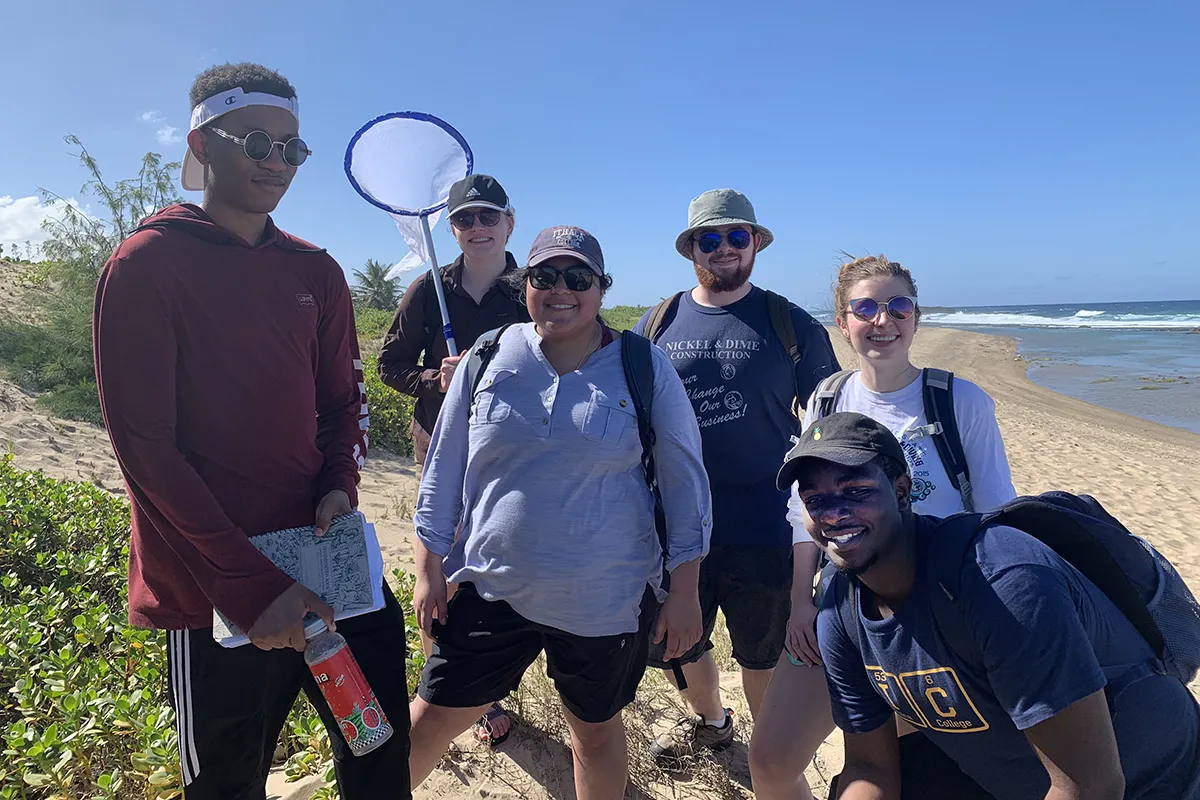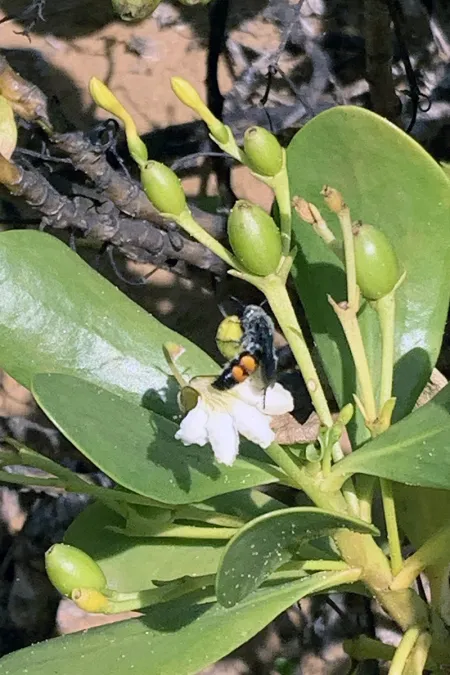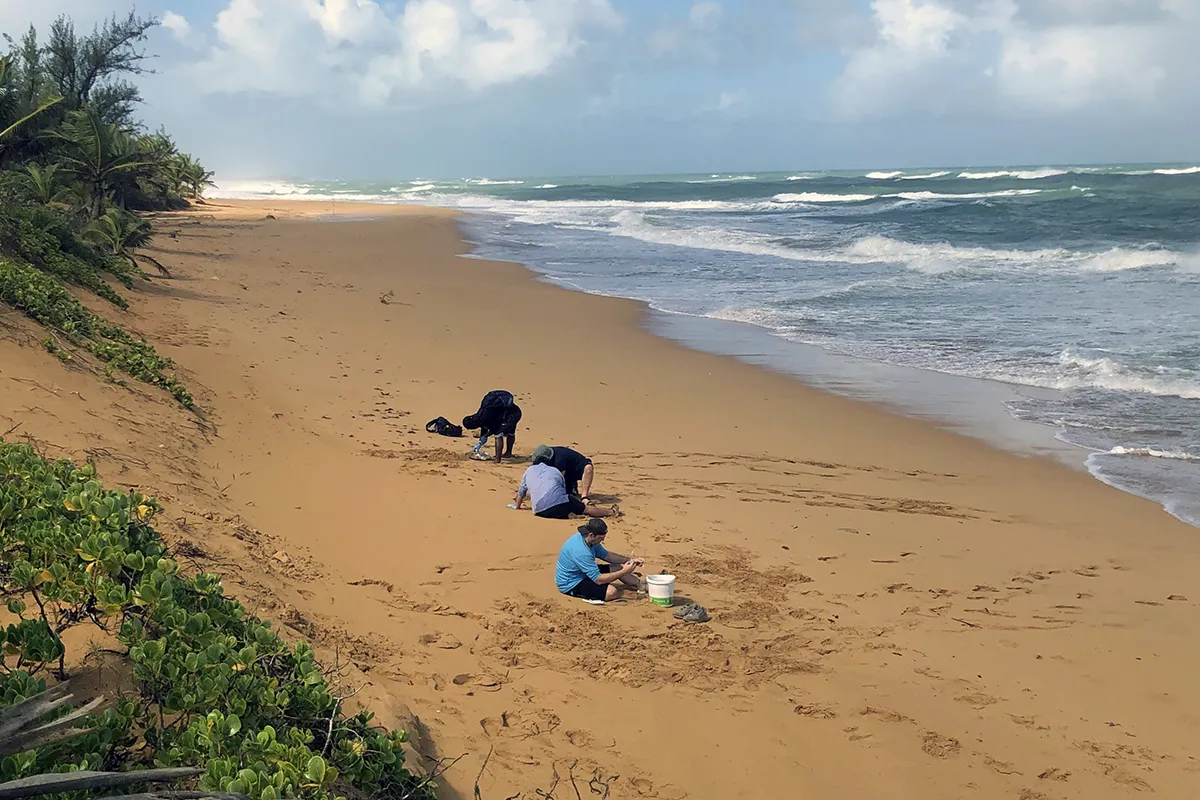Anderson enrolled in Witherup’s class on the Biology of Oceanic Islands last fall and was excited about the opportunity to visit Puerto Rico and get her first experience conducting field research. She was also looking forward to being in a warm climate in the middle of winter. “Mostly I just wanted to collect data in a natural environment,” she said.
Griffin, too, was excited about getting involved in field work and pleased to be invited to join the trip. “I was nervous that everyone would know more than I would because I was the only one who hadn’t taken the class,” she said. But after the earthquake struck and the research plan changed, none of that seemed to matter.
Since much of their research equipment had been shipped to Vieques in advance of their arrival, they were forced to improvise with simple or home-made devices.
“One of the things I learned from the trip is that there are a lot of ways to do science,” said Anderson. “We were able to do almost the same things we had planned for on Vieques but with a mop bucket and a handpump and foldable microscopes. We were able to MacGyver it.”
In addition to collecting data on the pollination of the native and invasive shrubs, the students also helped Gondek learn about the tiny organisms that live in a bioluminescent bay.
Puerto Mosquito on Vieques Island is one of the brightest bioluminescent bays in the world. The tiny single-celled organisms called dinoflagellates that live there have evolved a mechanism to illuminate whenever there is a disturbance in the water. Gondek seeks to understand how the bacteria that also live in the water may affect the ability of the dinoflagellates to bioluminesce.
“There have been lots of studies on the dinoflagellates, but nobody has asked questions about the bacteria,” he said. “We’re starting with asking what kind of bacteria is there and what they’re doing, and then we’ll have more ideas about why they’re there and what’s going on.”
It’s an important phenomenon to understand. When Hurricane Maria struck, the bay went dark for several months after the bioluminescent organisms died. Climate change may also be having an effect.
“It’s critical from a biological standpoint to understand what’s happening,” said Gondek. “But it’s also the driving force of the economy of the island. People rely on that money coming in from tourism, so if the bioluminescent lights go out, it could have a tremendous economic impact.”
But since the research team couldn’t get to Vieques Island in January, Gondek took them to a different bioluminescent bay, Laguna Grande, which is now allowing him to conduct a comparative analysis of the bacteria in the two bays.


